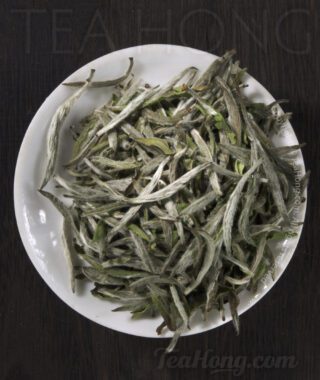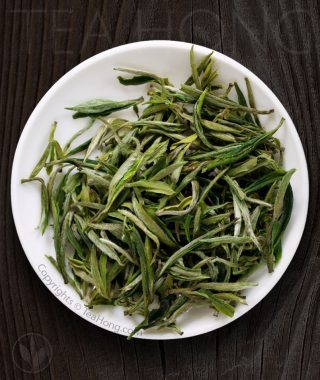GABA Orange Extra, de-oxygenised oxidation Taiwan oolong
$ 28.80
Gamma-Aminobutyric Acid Enriched:
There maybe a few other options of GABA tea out there, but to produce one that is fine tasting as well as organic requires real experience, dedication and stringent process management. Presenting GABA Orange from Nantou, Taiwan. Our answer to those of you wanting naturally formed GABA from a nice tasting oolong, with that touch of orange wonderfully developed in the tealeaves themselves. Nature always has surprises for us. We just have to work with it to make it happen. ( What is GABA? )
Net weight: 70 g (2.5 oz) in Kraft-alu pillow
Out of stock
南投有機精選 橙韻伽瑪烏龍
Taste profile
Nose: Soft, citric and yet woody and warm aroma with hints of bread and cinnamon. Palate: Smooth, sweet infusion with touches of hawthorn and tints of apple. Distinct accents of juice from a Xinhui orange — a Chinese variety native to Xinhui County in Guangdong, softly sweet with a unique floral subtly. Finish: Lightly sweet aftertaste with that same distinct citric bite. The taste profile of this tea is a little different from one’s perception of oolong or even tea in general. Expect a small surprise.
Infusion tips
Use a lower leaf amount to water ratio, say 1.5 g to 200 ml to start with ( please note: tightly rolled tealeaves like this are heavier than they seem; use a scale to get yourself acquainted with the dry leaves first ) and infuse for longer, say 8 minutes. 95°C with top drop gives very pleasing result. Increase the leaf amount if you feel you need a stronger taste. This is not a tea for gongfu style, but rather an easy, relaxing drink throughout the day.
Quality note
As in all of our other selections, we pick only the top quality batch in every harvest to include in our repertoire. While the name is now used in products by many other vendors, rarely do any mean the same thing, either in taste or in GABA level*, or both.
*Inspected and tested by Hungkuang University Functional Food Research Laboratory
Additional information
| Weight | 120 g |
|---|---|
| Dimensions | 18 × 9 × 5 cm |
| Net weight: | |
| Tea category: | |
| Class: | |
| Recommendation: | |
| Origin: | |
| TCM character: | |
| Packaging: | |
| Infusion color: | |
| Vintage |
Reviews(4)
Only logged in customers who have purchased this product may leave a review.







I compared this against 2 other GABA oolongs (which were more expensive) and this one was a clear winner.
I don’t like GABA oolongs. They give me headaches. I’ve tried a lot over the years, and for me personally, it’s not a pleasant experience. Most of them taste like dirty socks and get overshadowed by some kind of citrus-acidic funk. Pretty much all of the GABA oolong I’ve had in the past tastes like a fermentation project gone wrong – a miserable failure disguised as a “new processing technique” – but I’m not getting any of that from this specific GABA oolong.
This flavor profile of this oolong makes sense in the larger context of oxygen-deprived processing environments, where reduction chemistry becomes the dominant driving force behind the molecular transformations of leaf constituents, rather than oxidative transformations as guided by polyphenol oxidase & peroxidase. IYKYK.
The characteristic flavor profile of GABA oolongs somehow seems different with Tea Hong’s version. Instead of some dirty-sock, wet-stored pu’er flavor profile, I’m getting something that is reminiscent of orange creamsicles and fresh-baked sourdough bread with some spices dusted over the top of the loaf. There’s some underlying fruitiness that reminds me of goji berries and sweet citrus peel.
This tea showcases itself is a flavor-forward, refined, and nuanced oolong, something that I didn’t think was possible with GABA oolongs. It definitely responds very well to being brewed Western-style rather than gong-fu style.
This tea responds very well to being brewed out slowly. Don’t expect multiple, subtle layers of flavor moving across each other in a focused gong-fu session… expect a flavor-bomb brewed out Western-style. This tea resists turning bitter, and continues to release flavor into the soup for longer than you might expect. Push these leaves until the very end – it won’t turn bitter.
One of the best GABA experiences I’ve had. Thoughtful, refined, and focused where it needs to be.
We have tasted quite a range of GABA oolongs before finalising on this selection. As you said, in the beginning, we do not like this “GABA” idea at all simply because all that we have tasted were somewhat like what you described as “dirty socks” 😂. I have not gone through enough research papers on why the “reduction” process through the deoxygenated environment that results in the terrible tasting chemistry and why our selection has escaped from it, but clearly Mr Yu our GABA maker has developed a trick that not only increase the GABA content but also give a unique good taste as this. We have heard that a research is being done to understand this and hopefully we can get to read the paper soon. In recent years a couple of other producers are getting similarly pleasing results, and they are all Mr Yu’s friends. We are closely monitoring and happy for this development.
Brief (few seconds) steeps in 90 Celcius water.
Liquor is a clear golden brown in visual.
Taste is of a sweet smoke in aroma with a sweet spice aftertaste.
If you let it cool down a bit, the sweet aftertaste is more pronounced.
A slight dryness to the mouthfeel.
Empty cup leaves an aromatic sweet smell of burnt sugar.
Wet leaves are brown-black in tone, giving off a dark baked bread aroma.
This tea withstands so many steeps, and I think bold enough in flavour to be made into iced tea.
Thank you for sharing your experience. All our bead shape Taiwan oolongs are tightly rolled. Upon very short infusion time, indeed the release rate will be slow. That is why you are getting a lot of infusion rounds. If the strength from the quick brew is already satisfactory to you, maybe less leaves using a slightly longer infusion time will give you a whole new horizon in the taste of this tea. Again as a general reference: https://www.teaguardian.com/tea-hows/gongfu-infusion-parameters-general/
DELIGHTFUL
I brewed this tea in a 200ml Da Hong Pao teapot for 8 minutes, and a second brew for 10 minutes. Indeed, the taste and aroma are quite surprising and extraordinary! It’s unlike what is expected of an oolong tea … very unique! It changes your perceptions. GABA is supposed to calm the mind. I am not sure if GABA is doing its job but the exquisite taste and aroma of this tea are working wonders.
What a refreshing point you have made! Making tea using a longer duration rather than those popular practice of a few seconds. When I first experienced old style gongfu tea-making in Chaozhou decades ago, this old man moved very fast with his equipment and water, talked fast too (I hardly made out 50% of what he said ), yet he sat there patiently while waiting for tea to brew in his small teapot. I still remember the sensation of the full-flavoured liquor to this day. By the way, the upcoming batch of GABA is going to be a lot more wonderful than this one. — Leo Kwan
Thirsty Pebbles
What’s all this talk about Gamma-Aminobutyric Acid (GABA)? I ordered this tea based on the lovely description of its taste and the tantalizing photo of the tea itself. I had no idea that the name refers to an oxygen-free, nitrogen-rich fermentation process that boosts levels of naturally occurring GABA. This compound is said to offer possible benefits to the central nervous system. Lord knows, my nervous system could use a gigantic chill-pill. But that’s not why I love this tea. Here’s why: The dry GABA nuggets offer up a heady aroma while the brewed tea’s color and flavor suggest apricot. It’s woody, not sweet. On the second infusion, the leaves plumped up so big, they almost lifted the lid off my gaiwan. I probably used too much tea and underestimated its penchant for water. That was my mistake, but a happy one. The transformation and the taste were both thoroughly enjoyable.